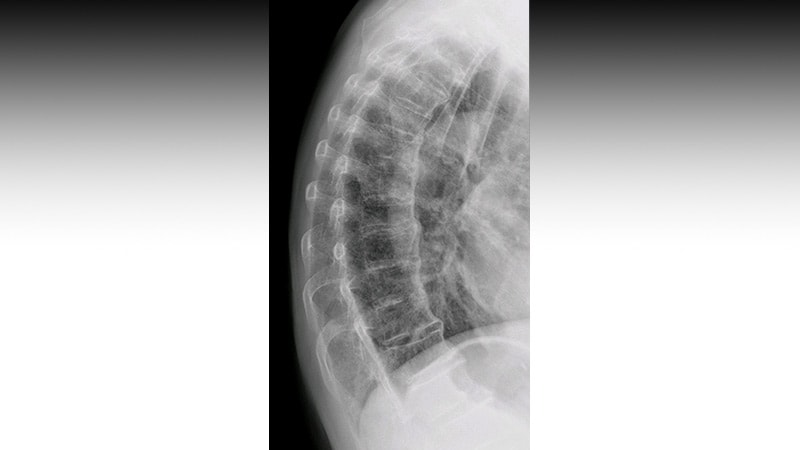TOPLINE:
This study linked severe obesity to diffuse idiopathic skeletal hyperostosis (DISH)-related spinal radiographic changes in patients with metabolic syndrome (MetS).
METHODOLOGY:
- Retrospective study of the effect of obesity on DISH-related spinal radiographic changes vs degenerative changes in patients with metabolic syndrome (MetS).
- Overall, 124 MetS patients with diabetes, hypertension, and BMI of 25 or higher were categorized into four obesity classes: 0 (BMI, 25.0-29.9), I (BMI, 30.0-34.9), II (BMI, 35.0-39.9), and III (BMI ≥ 40).
- Spine and chest radiographs were assessed to determine the presence of both DISH-related chunky spondylophytes and degenerative spondylophytes.
- DISH was diagnosed when spondylophytes spanned at least four contiguous vertebrae.
TAKEAWAY:
- Among patients with MetS, 33.9% were diagnosed with DISH.
- Patients with DISH had significantly more DISH-related chunky spondylophytes (P < .0001) and fewer degenerative spondylophytes (P = .04) than those without.
- Patients in obesity classes II and III had significantly more DISH-related chunky spondylophytes vs classes 0 and I (P = .02), with a comparable number of degenerative spondylophytes between groups.
- DISH patients in obesity classes II and III had more DISH-related chunky spondylophytes than those in lower classes (14.1 vs 9.7); however, the difference was not statistically significant.
IN PRACTICE:
“Our results support the hypothesis that obesity may not only be a comorbid condition but also a driving factor in the formation of Drc [DISH-related chunky]-spondylophytes,” the authors wrote.
“The strong association between obesity and DISH-related radiographic changes underscores the importance of integrating weight management strategies into the clinical care of MetS patients to potentially mitigate the progression of Drc-spondylophytes,” they added.
SOURCE:
This study was led by David Kiefer, MD, Ruhr-Universität Bochum, Herne, Germany. It was published online on July 1, 2025, in The Journal of Rheumatology.
LIMITATIONS:
The retrospective design of the study may have introduced selection bias. Additionally, the study cohort was limited to patients with MetS, which could have led to an overrepresentation of obesity and related comorbidities, potentially limiting generalizability to populations without MetS or with lower BMI.
DISCLOSURES:
This study received no financial or industrial support. The authors declared having no conflicts of interest.
This article was created using several editorial tools, including AI, as part of the process. Human editors reviewed this content before publication.
